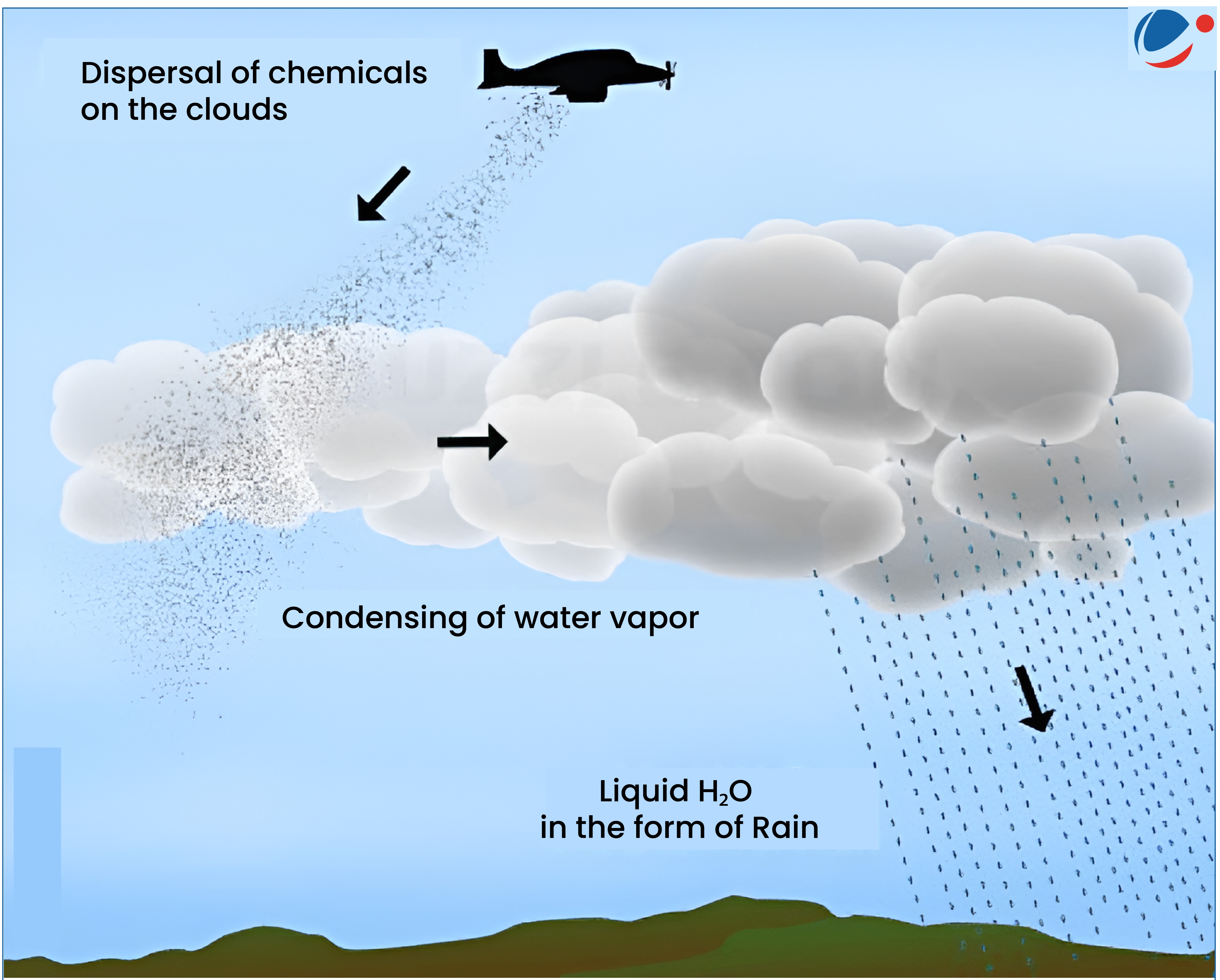Cloud Seeding

- About: It is a weather modification technique that aims at enhancing precipitation (generate artificial rain) from clouds.
- Method: Uses chemicals like silver iodide, potassium iodide, and dry ice, which are dispersed into the sky via airplanes and helicopters.
- These chemicals attract water vapour (acting as nuclei), helping form rain clouds.
- Types: Hygroscopic Cloud Seeding (accelerates the merging of droplets in liquid clouds) and Glaciogenic Cloud Seeding (induces ice formation in super cooled clouds).
Cloud Seeding as a solution to Climate Change
Arguments in Favor
- Regulates prevailing Weather Conditions: Regulates water vapour preventing damage by hails and storms; causes more winter snowfall, etc.
- Enhances Natural Water Supply: Making drier areas more liveable and supporting local communities.
- Disperses Air Pollutants: Reduces the concentration of dust, smoke, smog, etc., helps control wildfires.
- Benefits Agriculture: Provides moisture to crops.
Arguments Against
- Lack of Research: Lack of sufficient data to prove its effectiveness as a solution to pollution like the one witnessed in Delhi.
- Suitability: Requires presence of moisture-filled clouds as not all clouds are suitable for seeding.
- Impact of chemicals used: Silver Iodide (most preferred material) may cause iodism (type of iodine poisoning) proving toxic to terrestrial and aquatic life.
- Economic Viability: May cost around ₹1 lakh per square kilometer.
Conclusion: Apart from undertaking research on cloud seeding, other Nature based (green infrastructure; urban vegetation); construction based (carbon capture and storage, bio-based building materials) solutions could be explored.







